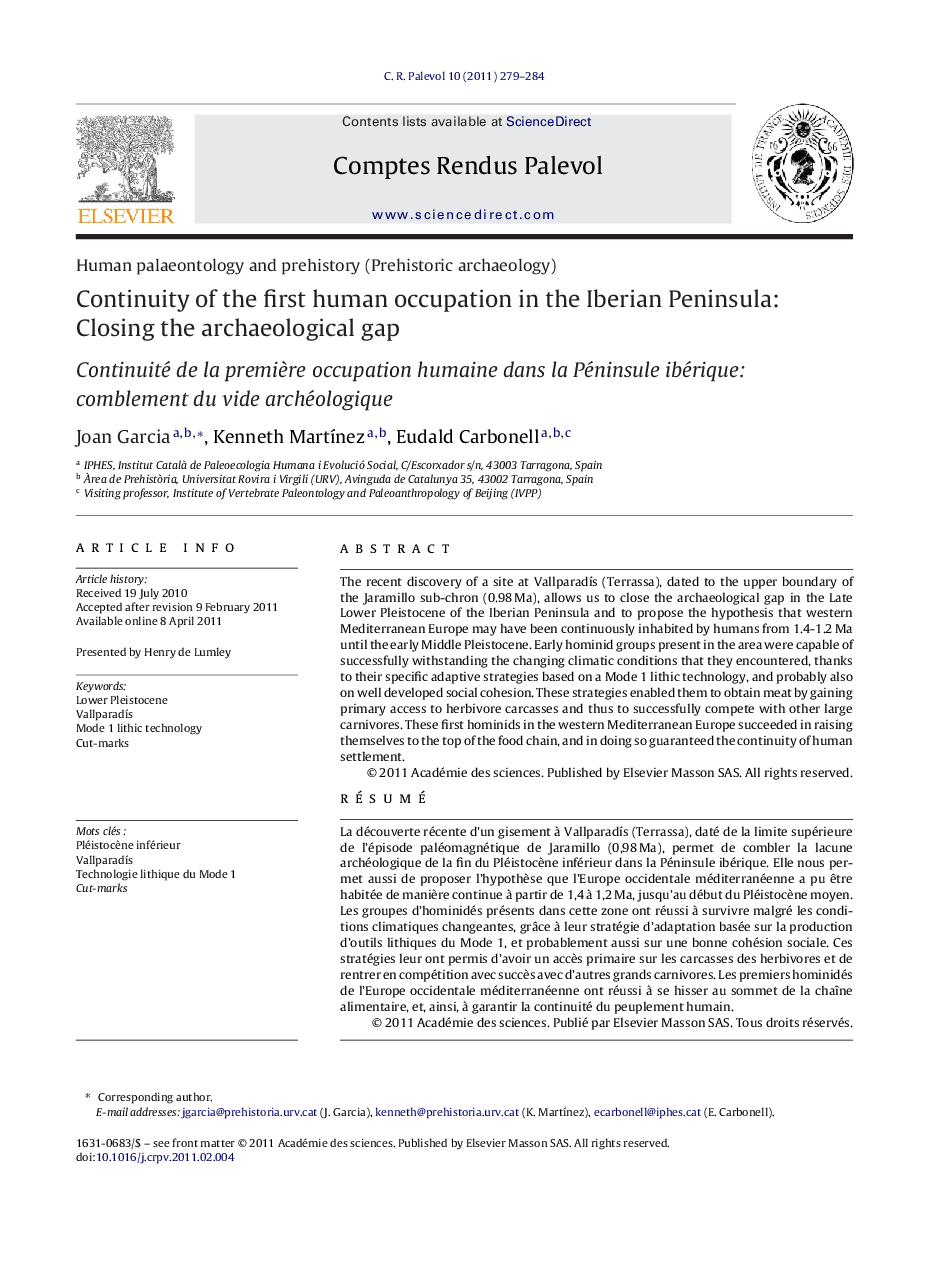| کد مقاله | کد نشریه | سال انتشار | مقاله انگلیسی | نسخه تمام متن |
|---|---|---|---|---|
| 4746051 | 1359802 | 2011 | 6 صفحه PDF | دانلود رایگان |

The recent discovery of a site at Vallparadís (Terrassa), dated to the upper boundary of the Jaramillo sub-chron (0.98 Ma), allows us to close the archaeological gap in the Late Lower Pleistocene of the Iberian Peninsula and to propose the hypothesis that western Mediterranean Europe may have been continuously inhabited by humans from 1.4-1.2 Ma until the early Middle Pleistocene. Early hominid groups present in the area were capable of successfully withstanding the changing climatic conditions that they encountered, thanks to their specific adaptive strategies based on a Mode 1 lithic technology, and probably also on well developed social cohesion. These strategies enabled them to obtain meat by gaining primary access to herbivore carcasses and thus to successfully compete with other large carnivores. These first hominids in the western Mediterranean Europe succeeded in raising themselves to the top of the food chain, and in doing so guaranteed the continuity of human settlement.
RésuméLa découverte récente d’un gisement à Vallparadís (Terrassa), daté de la limite supérieure de l’épisode paléomagnétique de Jaramillo (0,98 Ma), permet de combler la lacune archéologique de la fin du Pléistocène inférieur dans la Péninsule ibérique. Elle nous permet aussi de proposer l’hypothèse que l’Europe occidentale méditerranéenne a pu être habitée de manière continue à partir de 1,4 à 1,2 Ma, jusqu’au début du Pléistocène moyen. Les groupes d’hominidés présents dans cette zone ont réussi à survivre malgré les conditions climatiques changeantes, grâce à leur stratégie d’adaptation basée sur la production d’outils lithiques du Mode 1, et probablement aussi sur une bonne cohésion sociale. Ces stratégies leur ont permis d’avoir un accès primaire sur les carcasses des herbivores et de rentrer en compétition avec succès avec d’autres grands carnivores. Les premiers hominidés de l’Europe occidentale méditerranéenne ont réussi à se hisser au sommet de la chaîne alimentaire, et, ainsi, à garantir la continuité du peuplement humain.
Journal: Comptes Rendus Palevol - Volume 10, Issue 4, May–June 2011, Pages 279–284